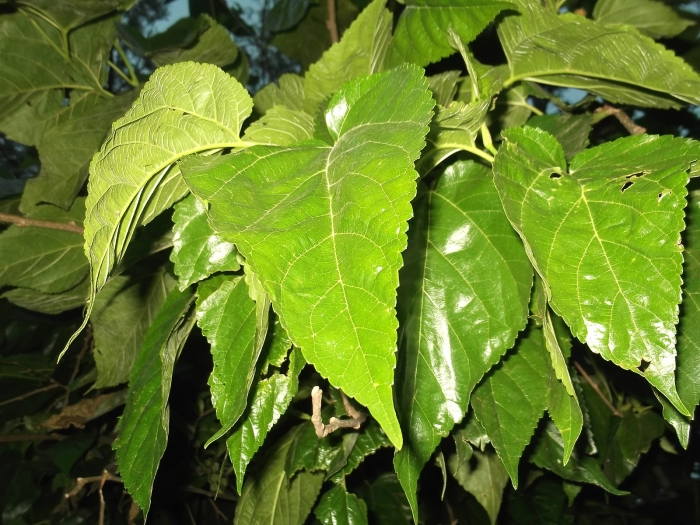Korean Mulberry
(Morus australis)
Korean Mulberry (Morus australis)
/
/

Yercaud-elango
CC BY-SA 4.0












Estimated Native Range
Summary
Korean Mulberry is appreciated for its fruit production, ornamental value, and relatively easy maintenance. It is often used in urban landscapes, as a fruit tree in gardens, and sometimes for its shade. It thrives in full sun to part shade and prefers well-drained soils, although it is adaptable to various soil types. Regular watering is important, especially during dry periods. While generally pest-resistant, Morus australis can be susceptible to bacterial blight and powdery mildew. It is important to be aware of its potential invasiveness when grown outside its native range, as it can spread through root suckers and self-seeding.CC BY-SA 4.0
Plant Description
- Plant Type: Tree
- Height: 18-24 feet
- Width: 10-20 feet
- Growth Rate: Rapid
- Flower Color: N/A
- Flowering Season: Spring
- Leaf Retention: Deciduous
Growth Requirements
- Sun: Full Sun
- Water: Medium
- Drainage: Slow, Medium, Fast
Common Uses
Bee Garden, Bird Garden, Butterfly Garden, Edible*Disclaimer: Easyscape's listed plant edibility is for informational use. Always verify the safety and proper identification of any plant before consumption., Low Maintenance
Natural Habitat
Open woodlands, forest edges, and riparian zones in East Asia
Other Names
Common Names: Chinese Mulberry, Aino Mulberry, Wild Korean Mulberry, Shimamullbär, 산뽕나무, Aino Mulberry, Tang-Gui Mulberry, 小桑樹, Ji Sang, Yama-Guwa
Scientific Names: , Morus bombycis, Morus australis, Morus kagayamae, Morus acidosa, Morus bombycis var. maritima, Morus bombycis var. caudatifolia, Morus amamiana, Morus australis var. maritima, Morus alba subsp. nigriformis
GBIF Accepted Name: Morus australis Poir.